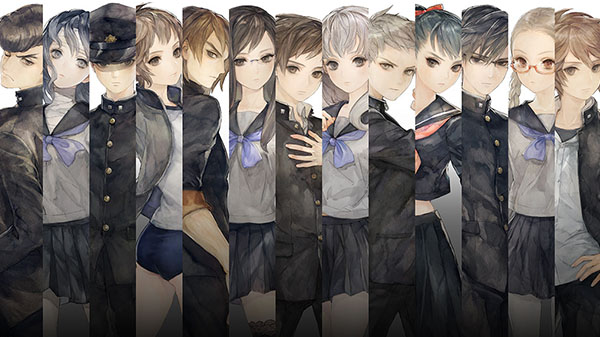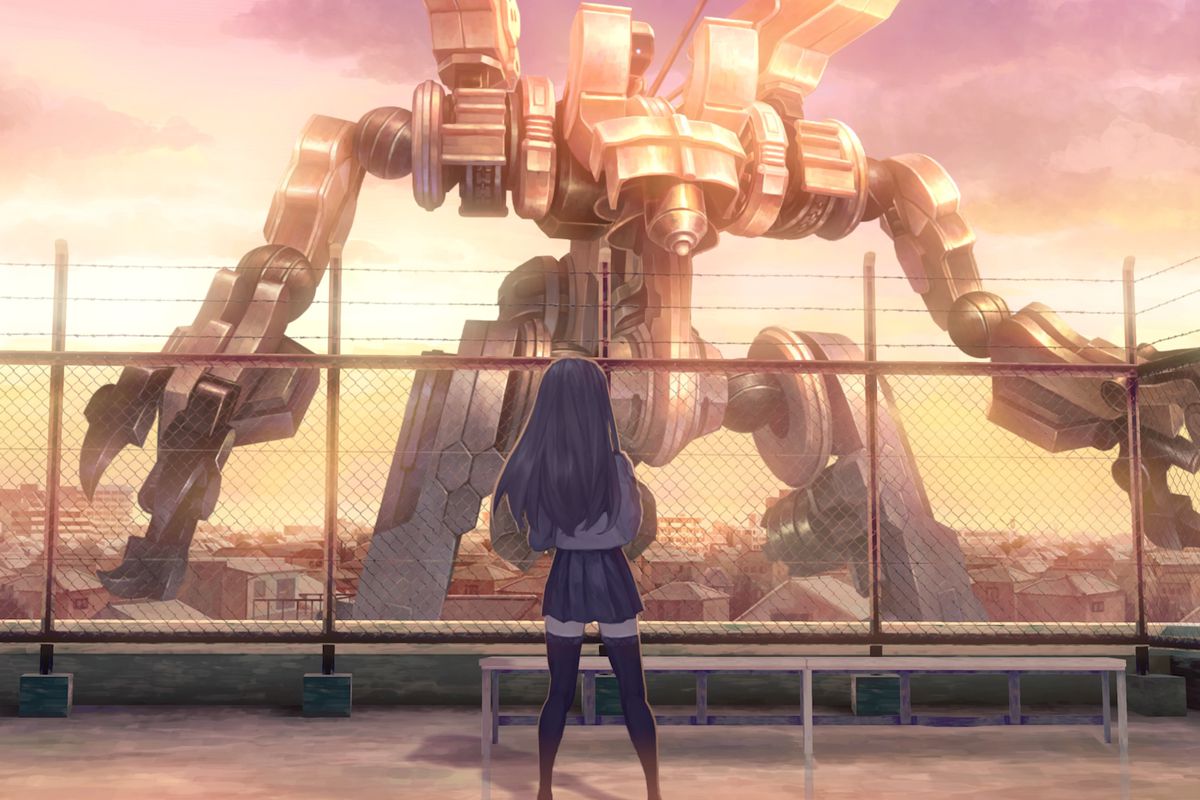
This was the hardest time I have ever had judging a video game. Conflicted in how I was going to approach the review, I have reworded parts and added to this (a couple times over) as I thought about how I wanted to describe it. To actually call 13 Sentinels: Aegis Rim a game is doing it a disservice almost; it is, at its core, an experience. Pure and simple. The game has very two different components that are more or less taken separate but form a part of the whole, and I find it hard to judge the game based on either half – but you almost have to the way they are approached…
For the first few hours of the experience, you are guided along a very linear path. 13 Sentinels has you play as one of the.. well.. 13 characters, has you fight a few battles, then play as another character for a while and again fight more stuff. But after that, the game branches open wide. You have Remembrance, which is just the story portion of the game, and you have Destruction, which is just the combat portion of the game. Now, that is not to say the two do not cross, as story is also told through Destruction, and progress in both determines what you can do in both. At one point, for example, you cannot advance the combat portion of the game until you have reached an overall percentage of the story from Remembrance.
Remembrance is where you are going to be spending most of your time in 13 Sentinels, so it is really what I should discuss the most. It is very hard to classify just what these sections resemble, as calling it a visual novel is not accurate, even if it may feel like it. These segments are not on rails and you are not just reading the story go by, even if it feels like you are. But also, they really are not fully ‘playable’; you make choices, talk to other characters and explore set pieces to move the story of 1 of 13 characters forward. But this is where the game shines, the story is nothing short of remarkable. You will get engrossed into it and want to continue.

If you played Odin Sphere, also by VanillaWare, you can sort of expect how they tell the story. Expect to see some events carry out through multiple characters’ points of view (much like in Odin Sphere). And even though more than one character may be in a scene, it will be skipped over in the other characters events, or have it taken place before or after their story section covers. This cuts down on repetition and fatigue in the story. Also similar to Odin Sphere, the story is told almost completely out of order. While this does not always work for storytelling, it still finds a way to draw you into the story more.
You just almost constantly want to see what is going to happen next, and the game knows it, as it has a habit of locking you out of storylines until you complete others– even if you want to see what is about to happen in that line. This format does make the more narrative more interesting, and will have the player persistently moving around in the story. You will want to keep going, and just when you think you have figured out one angle of the story, it completely changes on its head, like, “Oh look! It is time to go play that character you have 0 hours with and watch the story evolve five more ways”.

You will be very confused for most of the 30-hours it will take to complete the story, but you will enjoy every second of it. Every character feels uniquely different too. Almost every trope or archetype from Japan — either culturally or form anime — can be found in one of the 13 characters. From the ditzy ‘eating toast in a hurry’ anime girl, and her major otaku male classmate right down to the tough girl sukeban and pompadour rocking yankii. And the best part, VanillaWare doesn’t let you get too far in the story and get spoilers. When you are getting close to major plot twists, they don’t want you to know just yet, branches get locked out.
I enjoyed the plot to Yuki, the sukeban, the most from the start, and steamrolled her story until it locked me out. It then made me progress Natsuno’s story a bit and before I knew it I was locked out of 5 different stories all needing progress in Natusno’s plotline, but I couldn’t advance her plotline until I got further in Destruction. It was well paced and made me seek out the other characters more than I admittedly would have if I could just go through each one all the way from the word go.

All in all the plot, which at its basic core, involves a group of 13 people and their mecha (Sentinels) out to stop a kaiju invasion, will keep you playing, even if you end up not liking Destruction. While the plot is nothing new, especially if you enjoy the tokusatsu genre of Japanese TV, the twists and turns and different angles to this story definitely make 13 Sentinels unique and stand out head and shoulders from the pack of other kaiju fighting plots that may exist.
Destruction is where many may fumble with the game. It feels like it was added on at the last moment, and this is where you pilot your Sentinels and fight off obscene amounts of kaiju (numbers in the 10,000s, of all shapes and sizes). The basic attack units of the invading force are your typical oversized monsters – the kaiju, but with them are also tons of smaller fodder enemies that you can shoot rockets at to blow up 1,000s at a time. It is pretty satisfying to see thousands of small robots explode!
The combat flows like a bit of a real time strategy, every action you take costs some sort of resource – the biggest one being time. Moving, recharging your guns, recovering your fuel all cost time and each battle is a race against multiple clocks that will leave you trying to figure out your best course of action at any given time. To battle the thousands of kaiju you face, you have 13 sentinels, and each one feels a bit different than the rest to a degree and assigned a generation. First generation Sentinels are good at close range where as 3rd Generation Sentinels excel at range, things like that. Finding the right mix is always important as characters take ‘mental’ damage from using their sentinels and can only go a few battles before needing time off, so figuring out how to best assign your team is a major choice of itself.
My biggest gripe is with the combat, and the graphics VanillaWare chose to go with, or lack of, for the battles. Each battle is fought on what looks to be a top down satellite map of a city, your units are green triangles and the enemy units are red. Given the developers’ amazing hand drawn graphics, it would have been a major treat to actually see the Sentinels and Kaiju fight, but I get the choice to use the top down map to help really hammer home the scope of 13 Sentinels vs a near endless army of kaiju.

And yes, if you have ever played a VanillaWare game, you know what to expect from the graphics; their signature hand-drawn art is on full display here and look the best they ever have. Each character has so much loving detail put into them, and all the environments you can explore in Remembrance are very detailed. This is VanillaWare at its best, and there is no way around that. Not just graphically either, as I found myself unable to put this down and just had to keep delving deeper into the story’s secrets.
VanillaWare tried something new and diverged off their usual game type, and it paid off in leaps and bounds. I know their games tend to be very niche in the west, but 13 Sentinels: Aegis Rim is an experience every sci-fi nerd should experience at least once. Seriously, you will not be disappointed.
4.75/5 Kaiju Bibles.
-Keiko Fukuyama

